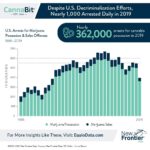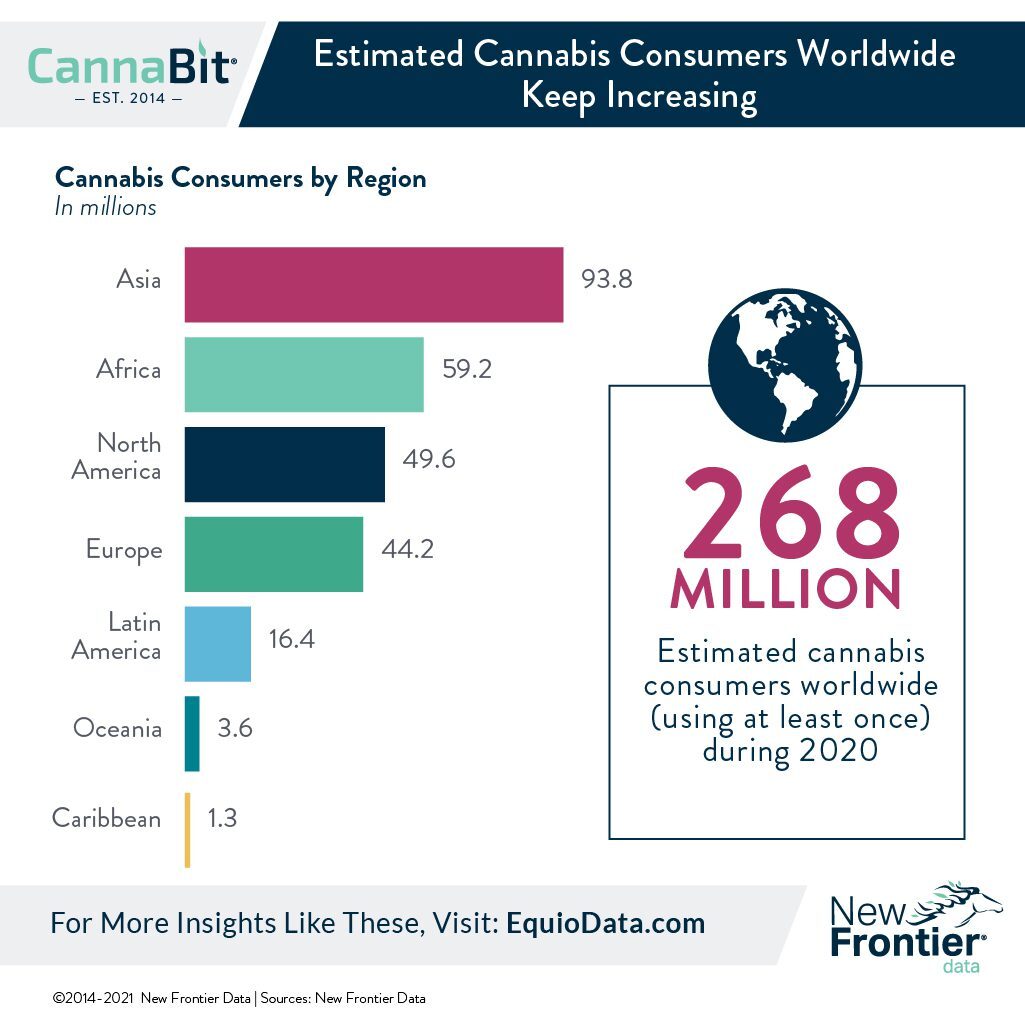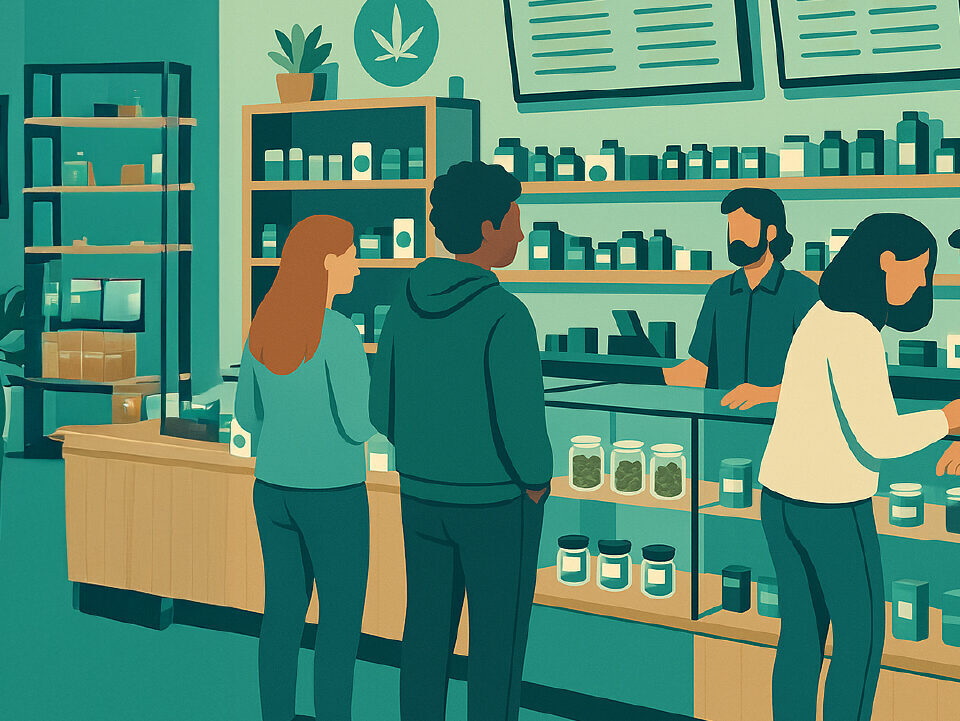Grass Grows Greener Globally as Total Cannabis Consumers Increase Worldwide

Social Equity and the Proposed Cannabis Administration and Opportunity Act
September 7, 2021
New Frontier Data Projects Doubling of Global Legal Cannabis Sales to USD $51B by 2025
September 15, 2021By Kacey Morrissey, Senior Director of Industry Analytics, New Frontier Data
During two years since New Frontier Data’s last global market outlook, the legal cannabis industry has undergone accelerated liberalization, normalization, and commercialization. Beyond record sales of cannabis during the COVID-19 pandemic shutdowns, two broad global themes have fueled the expansion of legal access to cannabis – growing acceptance of the plant’s therapeutic value, and recognition of the industry’s potential as a catalyst for economic growth.
Worldwide, an estimated 268 million people consumed cannabis at least once during 2020. The estimated number of cannabis consumers per region is heavily dependent on the population size, demographic age ranges, and average rates of past-year cannabis use in the individual countries that compose each region. While Asia – the world’s most populous region – by default has the highest count of cannabis consumers (with an estimated 93.8 million), the continent nevertheless has comparatively lower cannabis usage rates than any other region, giving it both the largest number but lowest density of cannabis consumers globally.
Across the planet’s adult populations (i.e., ages 15+), North America (with an estimated 49.6 million cannabis consumers) is home to the highest rates of cannabis use, with those in Canada and the United States (accommodated by liberal social policies) both supporting the advancement of legalization and establishment of robust regulated markets. The legalization of cannabis leads to higher reported rates of use, and acts as the single-most important factor in the growth of a national cannabis consumer base. Mexico recently became the latest country to fully legalize possession and use for adults, and others are likely to follow as more countries realize how reform legislation could help spur economic growth in their post-pandemic economies.
In the U.S., amid historic economic and social disruptions, nearly half of American cannabis consumers reported using cannabis to help manage stress and anxiety during the pandemic. Furthermore, the shift to working from home, coupled with constraints on social gatherings, encouraged more cannabis consumption than had been seen before the pandemic, driving retail cannabis sales 35% higher than had been forecast in legal U.S. markets.
Even as UN policies toward cannabis have been slow to thaw, countries worldwide have proceeded with their own approaches to legalization.
Legal Medical Markets
Globally speaking, medical cannabis has been the main driver of legalization, but national medical programs have varied widely in their implementation practices. Some restrict possession and use, granting only a small number of patients with access to a tightly controlled list of imported cannabis products, while others openly allow broad patient access by approving expansive lists of qualifying medical conditions and establishing licensing for domestic production. In Europe, many countries have taken a pharmaceutical approach to regulation (i.e., issuing products through pharmacies), with some covering the costs of medical cannabis under national health insurance systems. In Latin America, those countries that have best managed to get legal medical sales off the ground have done so via the expansion of private clinics with on-site physicians available to prescribe cannabis.
In 2020, there were an estimated 4.4 million active medical cannabis patients globally who accessed legalized, high-THC products (84% of those patients being Americans registered among 38 U.S. state medical cannabis programs in operation). The number of patients in those programs is projected to grow by more than 2 million over the next five years, to a combined 6.5 million worldwide by 2025.
As New Frontier Data’s research has shown, many consumers in illicit markets use cannabis therapeutically. Educating consumers about how to most effectively use cannabis medicinally, and transitioning their purchases to legal, regulated markets will be a central driver of legal cannabis market growth globally in the coming years.




